PlayMotion
August 2006 - August 2007May 2005 - May 2006
Company Description
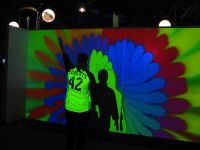
Shadow paintingPlayMotion was an early motion gaming developer. Before the Microsoft Kinect, we were using cameras to track people's whole bodies and use them to control video games. Unlike the Kinect, PlayStation Move, or many other motion tracking systems which looked out at you from the screen, PlayMotion's core product relied on using large, wall-sized front projection and tracking 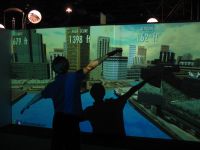
Flying over Baltimore the shadow you cast when you stood in front of it. In this way, we used your shadow as your avatar within our games.
Because of PlayMotion's use of a specific projection setup, its business was not focused on a retail home audience. Our primary customers were museums, family entertainment centers, night clubs, hospitals, corporate events, and other similar venues. 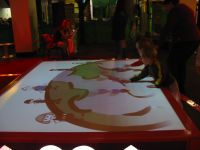
"Helping hands" at a children's museum We had a growing library of casual gaming titles that could be easily customized for individual clients, or we could develop custom experiences. Often a number of our titles would be run in a timed rotation. These experiences could range from a game where you put your arms out and fly over the local city or an imagined landscape to artistic visualizations where your silhouette creates waves in a pool of water or projects swirls of colored smoke or grows trees out of your head. 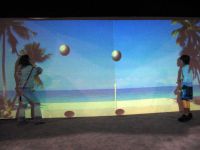
Virtual volleyball We created simple physical games such as virtual volleyball as well as more educational titles that could teach facts about the planets for a science museum or spelling of words for younger children. Additionally, PlayMotion did many special projects that didn't use this core motion gaming system, some of which I mention in other parts of this portfolio.
My Role

Catch a planet and learn about itThe development team at PlayMotion was small, and as a result, I was required to wear many hats. My primary role was as a game engineer, programming new games or customizing our existing games for specific clients. In addition, I made many improvements to our core computer vision library and game scheduling/switching framework. A big part of the work was extending our vision library to support new game engines and languages that would allow for 
Built using the SDK more rapid prototyping and development and would become the basis of a public SDK so that outside developers could create their own games for our vision platform.
Although most of our games were purely virtual, we would often integrate custom hardware input and output devices to give a more immersive, tactile experience. Most of the design and integration of these devices was my work. 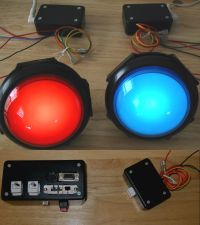
Snowball launcher interface This included such things as variable-speed fans that changed with the wind in our flying game or large buttons to launch snowballs in a winter-themed exhibit. Beyond input and output devices for the guests, I also created remote control, touch screen, and other interfaces for controlling game rotation and calibration by venue operators or our own installation/operations people.
Videos
 Several core titles |
 Flugtag flying game |
















